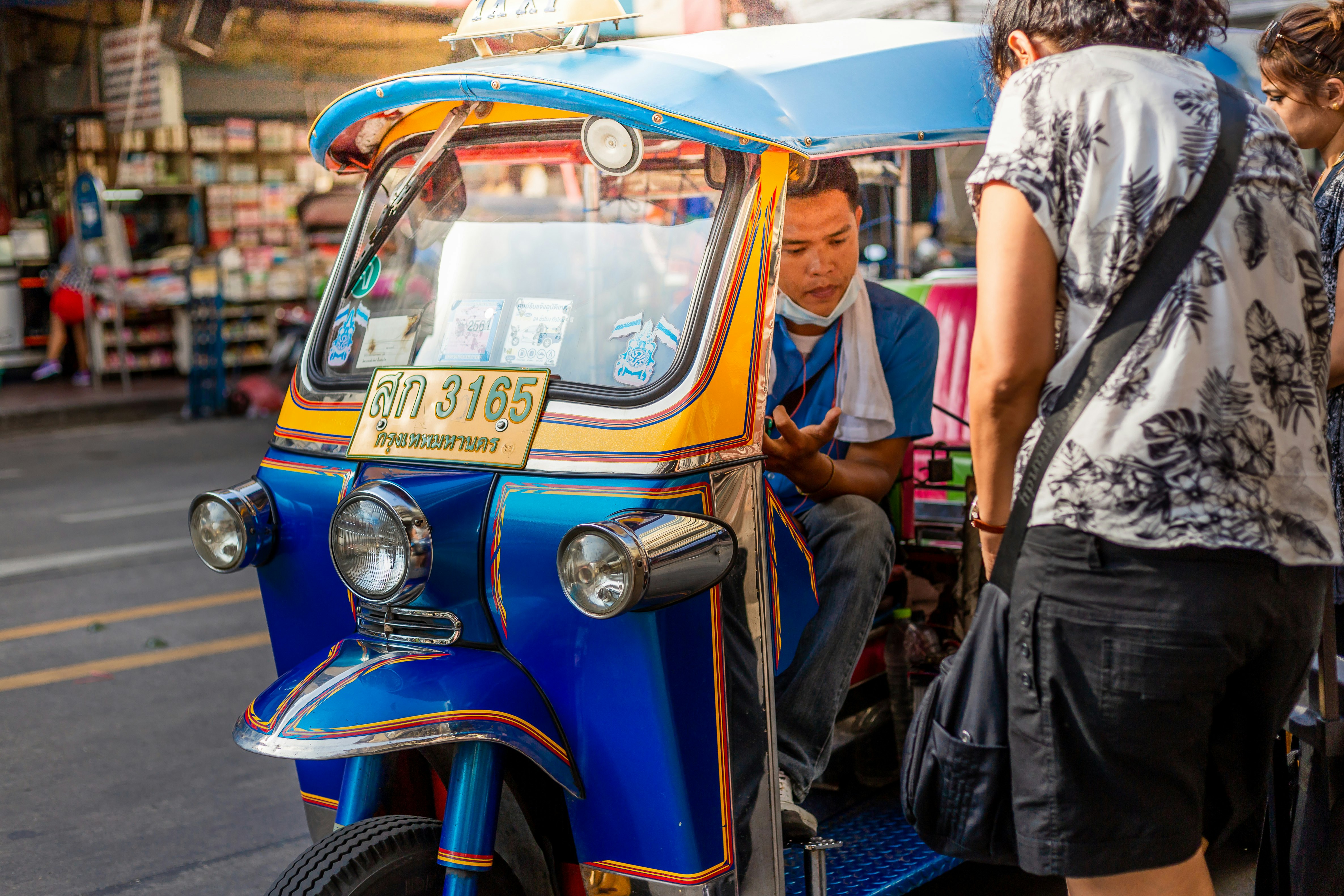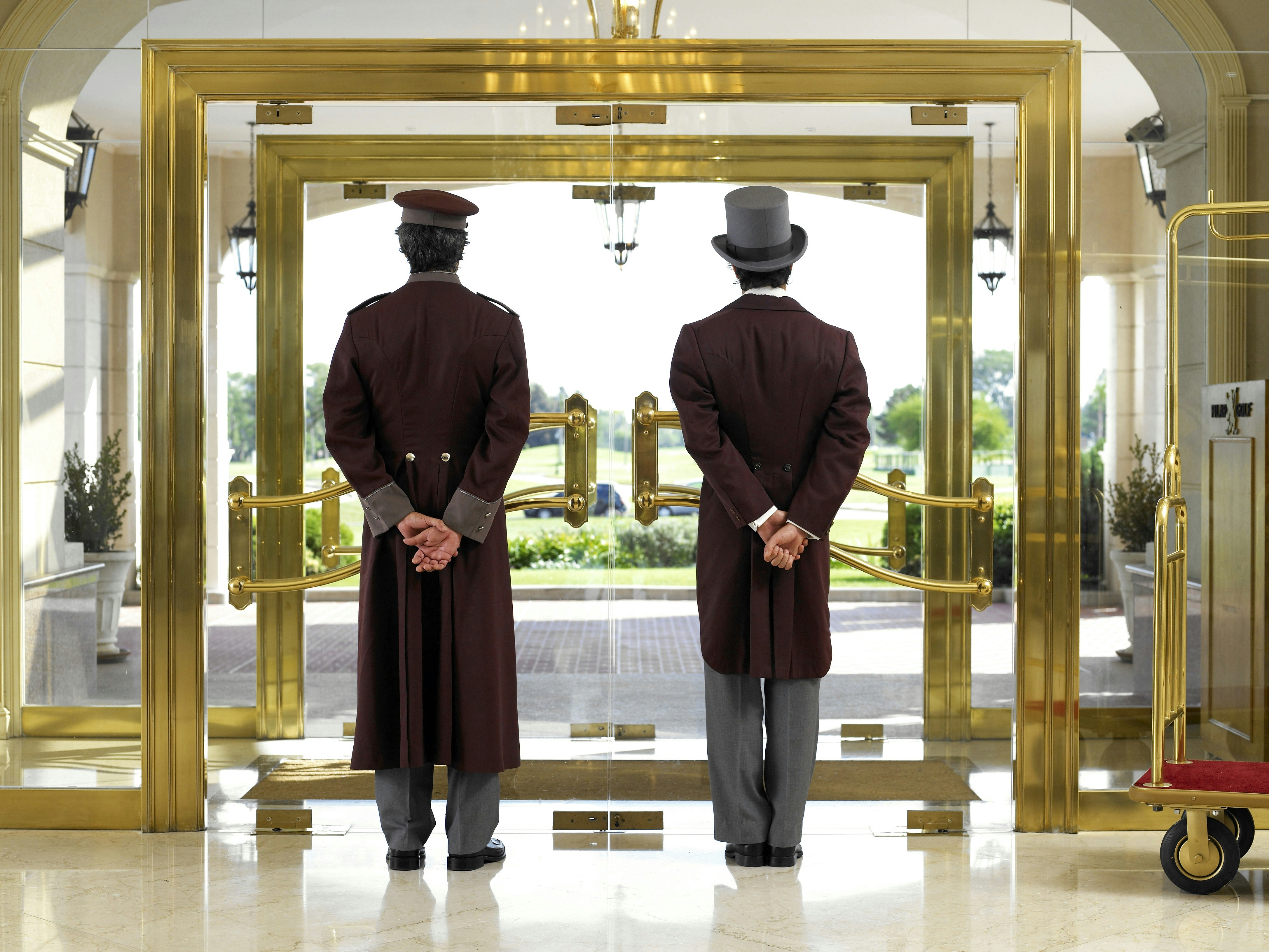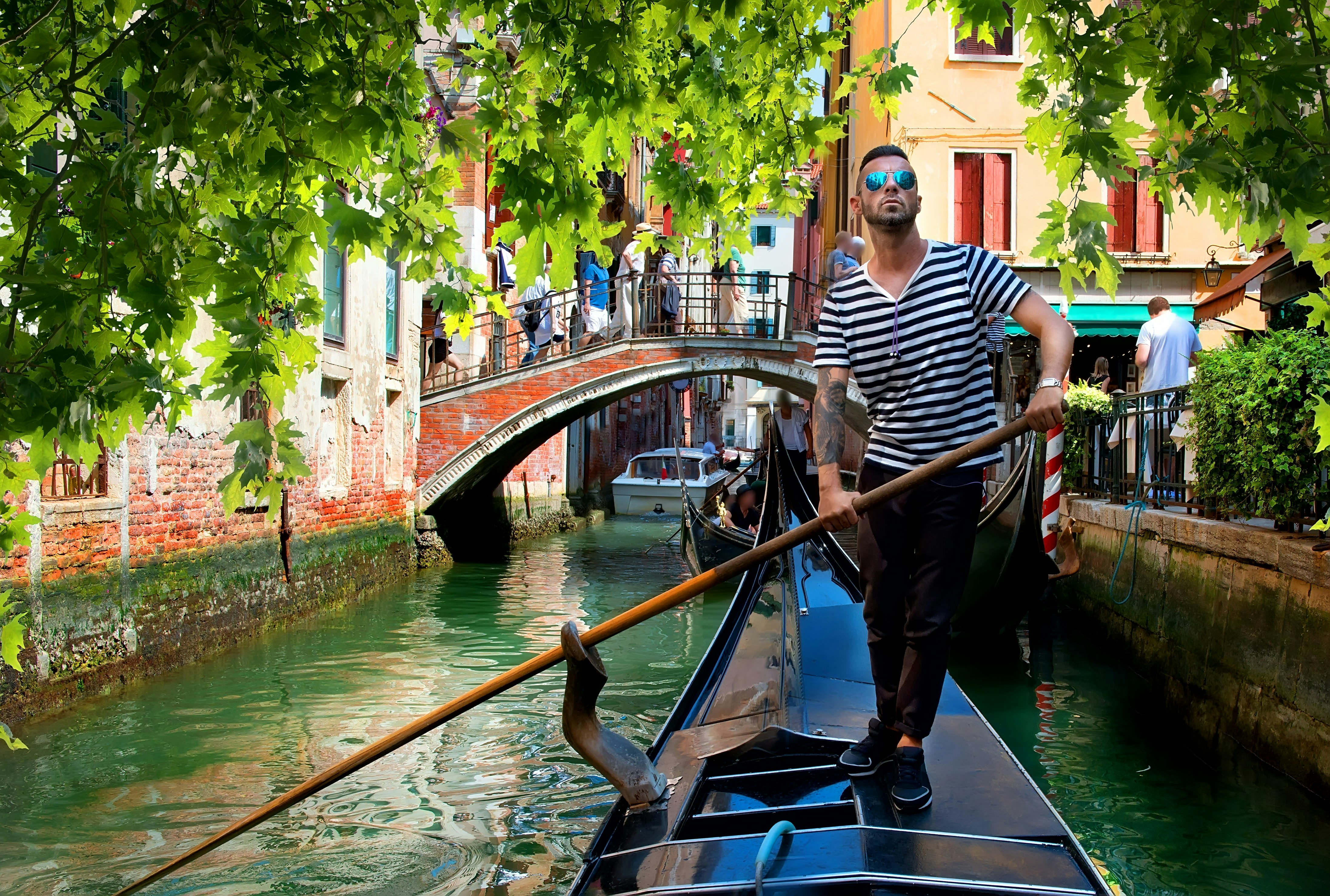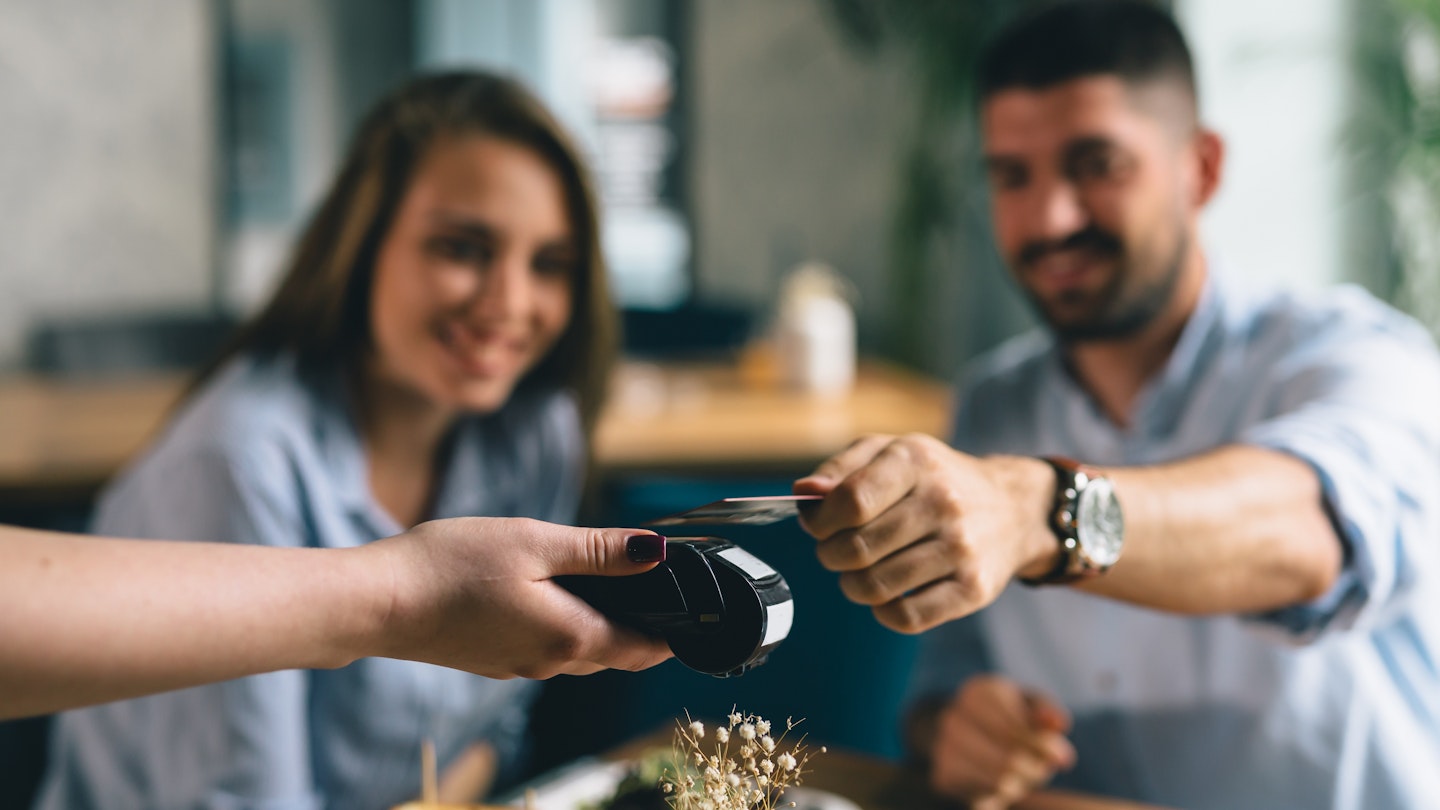If you’ve ever found yourself nervously flicking through a stack of notes at the end of a meal when on the road, or fumbling for loose change in the back of a taxi in an unfamiliar city, you’ll understand. Tipping is an elusive custom that seems to change its rules the world over – what is deemed a generous token of appreciation in some countries, can offend the subtle cultural sensibilities of others.

To help steer you through the quagmire of uncertainty and doubt that gratuities can throw up, we’ve put together the ultimate guide to tipping around the world. Whilst it’s important to acknowledge that tipping customs are always morphing and developing – particularly under the influence of mass tourism – this guide will shed at least some light on your travel tipping quandaries and monetary confusion, from restaurants and bars to hotels and taxis. And if after reading you’re still in doubt, there’s no need to worry – you’ll find detailed notes on the tipping conventions of your specific destination in the back of your Lonely Planet guidebook (hint, hint).

Europe
Restaurants and bars
Restaurant tipping in Europe is often misunderstood by non-European visitors, with US tourists in particular applying their own generous tipping culture where it isn’t necessarily appropriate. Many countries within the EU have laws that accommodate and standardise gratuity, and larger tips left after even the heartiest of meals, i.e. 15% and upwards, aren’t necessary.
Generally speaking, most European countries, including France, Germany, Spain, Czech Republic, Hungary, Ireland, Portugal and the UK, will add a service charge to a bill but, if not, leave between 5% and 10% (in local currency cash) unless the service and/or food has been poor. Certain other countries including Italy, Austria and Russia won’t always add service charge or expect a tip, but it is common to round up the bill, as wages in the hospitality industry tend to be lower. If eating in a restaurant in Italy, you may see the word ‘corperto’ on your bill – this is ‘cover charge’, but won’t necessarily go to the wait staff, so if you’re keen to tip, do it with cash and give it to your server.
Renowned for being eye-wateringly expensive, you’ll be relieved to note that restaurant tipping in Scandinavia and Iceland isn’t expected, and is usually covered in the overall price of the meal.
Adding tips in European bars isn’t expected, but if you’re feeling a bit generous (read: tipsy) after a few drinks, feel free to round up the bill. Tipping in London pubs (and indeed, pubs in the rest of the UK) is a bit of a head-scratcher for tourists, but it isn’t commonly done. If you find yourself riding high on the general bonhomie that the traditional British pub is known for, do offer to buy the bartender a drink using the phrase “and one for yourself” (with or without your best attempt at a cockney “guv’nor” following it).
Hotel staff
Hotel tipping etiquette for many European countries is fairly similar – note that tipping housekeeping staff here is generally less common than in the USA. In the UK, France, Spain, Italy, Germany, Czech Republic and Hungary, if you feel you want to tip, giving €1 to €2 per bag to porters and around €2 to €5 to housekeeping staff is a good rule. Slightly smaller amounts are required in Balkan and Eastern European countries.
In Russia, hotel staff are used to larger tips – between 200 and 250 rubles for porters and 100 to 200 rubles for housekeeping staff.
In pricey Scandinavia and Iceland, hotel staff do not expect tips as service charges are already included in their wages. The same is true for Switzerland, but here handing the housekeeping staff a small amount (roughly 5 to 10 francs) at the end of your stay will be greatly appreciated, even if not expected.
Tour guides
Tour guides and drivers in almost all countries in Europe are tipped separately. In Central and Eastern European countries and Italy, tip both about 10 to 20% per day of the tour depending on how much you enjoyed it. In most Western European countries, including France, Germany, Spain and the UK, a tip of around €25 to €40 (or local currency equivalent) a day for the guide, and €10 to €15 for the driver is fair. Russian guides and drivers may expect slightly more – around 3000 rubles for guides and 2,000 for drivers.
Private car drivers in Turkey will expect significant tips of around 200 to 300 lira per day, whilst group tour guides are usually tipped around 60 to 100 lira, and closer to 450 lira for private tour guides.
In Scandinavian countries and Iceland, tips for tour guides and drivers are not expected, but if you feel your experience warrants it, tipping 10% to both guide and driver is a nice gesture. Alternatively, you can offer to buy them both some lunch.
Taxi drivers
Taxi tipping in Europe is straightforward – pretty much across the continent drivers don’t expect tips, but rounding up the fare is customary, even as more and more taxis are being fitted with card machines. The only exceptions to this rule are France, Russia and Switzerland, whereby taxi drivers often expect a 10 to 15% tip at the end of a ride, and Scandinavia and Iceland, where tipping taxi drivers, even by rounding up the fare, is not expected at all.

The Americas
Restaurants and bars
For restaurants in the USA and Canada, service charge isn’t always added into the bill, and so tipping is pretty much a foregone conclusion – around 15 to 20% is the norm, unless the meal was truly inedible and/or the waitstaff were obnoxious (then it’s more like 5%...). In bars, tipping around $1 per drink, or 15 to 20% of the total bill is customary.
In Central and South American countries, including Mexico, Nicaragua, Argentina and Peru, service charge is more commonly added, but if you want to tip your waitstaff personally, between 10 to 15% (in local currency or US dollars) is a good amount. In others like Brazil, Chile and Costa Rica, restaurants will often include a 10% ‘sit-down’ charge (‘cubierto’ in Chile), meaning that a tip is not expected, but around 5% will still be appreciated if you’d like to give it. Tipping in bars here isn’t the norm, but feel free to round up the overall bill.
If you’re dining in the Caribbean (outside of a fancy resort), check the bill to see if the gratuity has been included already. If not, tip around 15 to 20% in restaurants, or round up the bill at a bar.
Hotel staff
Leaving tips for hotel staff in the USA and Canada, particularly housekeeping staff, is common practice. Around $3 to $5 a day for housekeeping staff is a good amount, and $1 per bag for porters.
Tipping slightly less in Central and South American hotels is fine. US dollars are usually accepted (although local currency is preferred). For porters in countries including Costa Rica, Mexico, Nicaragua, Brazil, Chile, Peru and Colombia, go with the local currency equivalent of $1 per bag for porters and $1 to $2 a day for housekeeping staff. Particularly in South America, rural haciendas are popular accommodation options. These are usually tended by a family of staff who will cook, clean and maintain the gardens, so leaving a pooled tip at the end of your stay of around $10 to $15 (or the local currency equivalent) per guest is appreciated.
Tour guides
When embarking upon an organised tour in the USA, Canada or Colombia, you can expect similar tipping etiquette – about $10 to $20 in local currency for a tour guide per day, and around $5 to $10 for a driver. As in Europe, both guides and drivers are tipped separately.
In most Central and South American countries, tour guides are tipped around $5 to $10 (or local currency equivalent) for a day’s work, whilst drivers are accustomed to receiving half that. Note that slightly different rules apply for Andes Trek and Inca Trail porters – this is covered in the last section.
The exception to the general South America tipping rule (aside from Colombia), is Brazil. Here, tourism industry professionals rely heavily on tips, and more generous amounts are appreciated. Think around 100 to 200 reals for a tour guide per day, and slightly less for drivers. It’s also worth noting that Brazilians are very discreet when it comes to business transactions, so don’t make your generous tipping too obvious!
Caribbean bus tours are a popular way to see different parts of whichever island you’re staying on and, if you choose to hop aboard one, tipping the driver a few US dollars is customary. For private tour guides, tip about $20 a day and for drivers around $10.
Taxi drivers
In the USA, Canada and the Caribbean, tipping taxi drivers about 10 to 15% of your fare is the norm, or a couple of dollar bills will suffice for short journeys.
Taxi rides in Central and South America fall into two camps when it comes to tipping expectations. If you’ve pre-negotiated (or haggled) the fare before getting into the taxi, don’t worry about tipping unless you formed a particularly strong bond with the driver. If the fare is fixed, feel free to round it up at the end of the journey.

Asia
Restaurants and bars
China, Myanmar, Singapore and Taiwan do not have a strong tipping culture, and so leaving extra money at the end of the meal, or in a bar, is largely deemed unnecessary. However, influenced by the influx of overseas tourists into larger cities, some chic new restaurants in China are starting to accept small tips when offered. The same ever-increasing numbers of tourists in much of Southeast Asia, including Cambodia, Thailand, Vietnam, Indonesia and Malaysia are becoming more and more accustomed to receiving tips, but they still aren’t expected and not leaving one is fine.
In India, service staff have become used to tips from tourists, despite tipping not traditionally being part of Indian culture. In more established restaurants (where service charge is not included), leave 5 to 10% if you really enjoyed the meal, and in smaller, less formal places, either leave a few coins or round up the bill. You can also tip bartenders up to 10% if they’ve really put in the hours serving you.
Other Asian countries, including Japan and Nepal, believe that tipping is only for exceptionally good service – being treated with hospitality and warmth is the norm and shouldn’t be ‘rewarded’. In Japan, some servers might even politely refuse a tip if you leave one.
Hotel staff
China’s no tipping culture prevails when it comes to hotels, but if you’re living the high life in a particularly luxurious establishment, feel free to tip the porter around 5 yuan per bag. You may also find that in high-end hotels, a 10% service charge will be added to the overall bill. Japanese hotels also do not expect their staff to be tipped, particularly in a traditional ryokan (inn). If you feel particularly inclined, leave around 5000 yen (for a short stay) in an envelope, but it may be politely refused if you hand it over in person.
India’s hotel staff are notoriously poorly paid, and so tipping the porter about 50 rupees per bag, and the housekeeping staff 250 rupees a day are particularly welcome gestures.
Throughout most of Southeast Asia, including Thailand, Cambodia, Indonesia, the Philippines, Singapore, Vietnam and Malaysia, a service charge will almost always be included in your overall bill upon check out, and so tips are not expected, although it isn’t uncommon to tip porters the local currency equivalent of $1 per bag. Tipping housekeeping staff is less common but, if you feel you want to, the local currency equivalent of a couple of US dollars per night is fine.
Tour guides
As you can probably guess by now, tour guides and drivers in China do not expect tips. South Korean and Taiwanese tour guides do expect to take home a little extra on organised excursions – around 10% of the tour cost is fine to split between the guide and driver. In Japan, tip tour guides around 2500 to 5000 yen for a full day, handed over in an envelope. If you’re using a private driver, it’s a nice gesture to offer to buy them lunch.
A general rule of thumb in India is to tip between 300 to 500 rupees a day for guides and 100 to 200 rupees for drivers.
In Singapore and the Philippines, tipping tour guides and drivers a combined 10% of the overall tour cost is fair – they should split it between themselves. Other Southeast Asian countries like Thailand, Vietnam, Malaysia, Cambodia and Indonesia observe a convention of tipping around $10 to $20 (in local currency) for a tour guide per day, and half of that amount for the driver. It’s customary to give the total tipping amount to the guide, who will then siphon off some for the driver.
Taxi drivers
No tips are expected by taxi drivers in China or South Korea, but rounding up the fare is standard practice in Japan. Indian taxi and rickshaw drivers are not accustomed to tips (however much they will insist otherwise), but telling them to keep the change is a genial gesture.
In Cambodia and Thailand, the local currency equivalent of $1 is a good tip for taxi and tuk tuk drivers, whilst in Indonesia, the Philippines and Malaysia, a 10% tip for fixed-fare rides is standard. In Singapore and Vietnam, simply round up the fare or offer the driver to keep the change.

The Middle East
Restaurants and bars
In the UAE, Qatar, Jordan and Saudi Arabia, servers in restaurants will expect a 10 to 15% tip at the end of a meal. Even in Dubai, where the government mandates 10% being added to bills at restaurants, hotels and bars, waitstaff will still expect a tip of up to 15%, or even 20%.
Restaurants in Israel will often add a 10% service charge to bills in restaurants and bars, so always check before you start counting out your notes to avoid unnecessary double tipping.
Hotel staff
Dubai’s government-mandated 10% service charge at hotels means that tipping is primarily reserved for those who are feeling particularly flash. In the rest of the UAE, concierges expect a tip for significant requests, like securing a table at a popular restaurant or organising a tour – between 100 and 120 dirhams should suffice. Tip porters around 7 dirhams per bag, and housekeeping staff around 10 to 11 dirhams per day.
In other popular Middle Eastern holiday destinations including Jordan and Israel, tip the local currency equivalent of $1.50 per bag for porters, the same per day for housekeeping, and around $2 to the concierge for small favours if you require them.
Tour guides
In Dubai, the rest of the UAE and Qatar, tipping a tour guide the local currency equivalent of around $10 to $15, and a private driver half that amount is a good way to go. After an excursion in other popular tourist countries in the Middle East, including Israel and Jordan, a slightly larger tip of between $25 to $35 (in local currency) for guides and $35 to $45 for driver guides is appropriate.
Taxi drivers
Dubai taxi drivers don’t expect tips, but round up the fare if you’re feeling generous. In most other Middle Eastern countries, including the rest of the UAE, Israel, Jordan, Qatar and Saudi Arabia, tip taxi drivers around 10 to 15% of the overall fare.

Africa
Restaurants and bars
Popular restaurants and bars in holiday hotspots like Egypt, Morocco and South Africa will add a 10% service charge to the bill. If there isn’t one, it’s common to leave a tip of around 10 to 15% if you were happy with your meal.
Throughout the rest of Africa, for the most part, leaving 10 to 15% is a normal tip for good service in restaurants, as is rounding up the bill in bars. Waitstaff and bar staff across much of Africa often earn a very basic living wage, therefore tips are a hugely welcome supplement.
Hotel staff
In certain northern African destinations like Egypt and Morocco, hotel concierges are powerful forces. Tip them generously (around the local currency equivalent of $15 to $20) at the start of your stay to ensure good service for the duration. Housekeeping staff should be tipped about $3 to $5 a day in local currency, and porters $1 per bag.
Throughout Africa’s popular tourist destinations, including South Africa, Kenya and Tanzania, hotels will expect small tips of $1 in local currency to the porter for each bag, and to housekeeping staff each day. Concierges can be useful for pulling strings in these countries, so feel free to tip them around $3 to $5 in local currency for any favours they do for you. Luxury safari camps will often provide a general tipping box at the front desk, and anything placed into this box should be spread evenly among the camp’s staff. If you wish to tip a certain member of staff specifically, make sure you hand it to them in person.
Tour guides
When taking tours in North African countries, $20 a day (in local currency) is a good amount to tip guides and driver guides, while drivers can be tipped a bit less. In Morocco particularly, tipping of this nature is best done discreetly.
In other African countries where you might embark on an excursion, tipping about 10% of the overall cost to tour guides and drivers is appreciated. On safari drives, the general idea is to tip your guide the local currency equivalent of $10, and your tracker $5 per day, but give these as cumulative tips at the end of the safari.
Taxi drivers
Throughout most of the African continent, the norm when it comes to tipping taxi drivers is to round up the final fare, or tell the driver to keep the change. In countries more accustomed to mass tourism, like Egypt and South Africa, drivers will usually expect a 10% tip at the end of a journey.

Oceania
Restaurants and bars
As staff in the hospitality industry are generally assumed to earn a decent wage in Australia and New Zealand, tipping in restaurants and bars here is not expected, but a standard 10 to 15% is appreciated if you feel the experience warrants it.
On the South Pacific Islands, tipping in restaurants and bars is even less of a concern, as the practice is not part of the indigenous cultures. That said, if you visit a particularly swanky restaurant and have your mind blown with incredible food and service, do feel free to add on 10% to the overall bill, as much as it won’t be expected.
Hotel staff
Australia and New Zealand’s hotel staff are used to fairly standard tips – think around $1 (in either Australian or NZ dollars) per bag for porters and $3 to $5 a day for housekeeping staff.
The South Pacific Islands take a more hospitable stance – when you initially check into your hotel you are considered an honoured guest, and if you stay a second time, family. Suffice it to say, neither of these are expected to tip. If you do feel you want to reward particular staff members financially however, do it face-to-face, otherwise it won’t be taken. This is particularly true of housekeeping staff.
Tour guides
Tour guides and private drivers in Australia and New Zealand should be tipped between $20 and $50 (in local currency) per day, whilst bus tour operators can be given around a $5 to $10 tip for a day’s work.
If you’ve been given a particularly good tour guide or private driver in the South Pacific Islands, showing your appreciation with a tip is acceptable, if not expected. The amount is up to you, but always tip in local currency, as US dollars are hard to trade.
Taxi drivers
Similarly, drivers in Australia, New Zealand and the South Pacific Islands will not expect you to tip at the end of a taxi ride, but rounding up the fare to the nearest $1 to $5 is common practice.

Other top troublesome tipping questions:
How much should you tip for ‘free’ walking tours?
A sightseeing option in many major cities worldwide, free walking tours are offered by various companies, but are united in their ‘pay what you want’ approach. Often led by locals, the tours are generally a couple of hours long, consisting of a predetermined, walking route that takes in specific city sites. Attendees are then asked at the end of the tour to leave tips of an unspecified amount if they feel inclined. Theoretically these tours are free, in that you are not obligated to leave any money at all at the end. However, it is generally expected that if you have stayed for the duration of the tour, you should leave the guide with something. A good rule of thumb is to tip the local currency equivalent of around $5 to $10 per person, but you are, of course, welcome to leave more.
Should you tip gondoliers in Venice?
Contrary to popular opinion, tipping gondoliers in Venice isn’t really customary, but by all means leave a few euros if you’re feeling flush.
How much should you leave when visiting a mosque or a temple?
There isn’t really a hard-and-fast rule here, but try leaving the local currency equivalent of $1 to the person handing out robes and scarves to women, and 50 cents to the person who minds the shoes if there is one.
How much should you tip for a Thai massage?
If you grab a quick massage on the Khao San Road or similar, don’t feel obliged to tip more than about 30 baht. If you indulge in a more upmarket massage, your tip should be more around the 150 to 300 baht mark. Resorts and retreats that include multiple treatments will usually state the tipping policy upfront.
How much should you tip Inca Trail porters?
The wages of brawny local porters who lug your bags and camping equipment along hiking routes such as the Inca Trail, are often included in a guided tour, but their truly invaluable work shouldn’t go untipped – around 15 to 20 nuevo soles per person, per day, is a good amount to give.
When should you give baksheesh?
When travelling in the Middle East and South Asia, you will often be asked for ‘baksheesh’. The term often applies to a simple gratuity or service charge, but can refer to all kinds of financial tokens of appreciation. If someone asks you for baksheesh without providing a service, this is considered begging, and so giving money is completely at your discretion, although not usually advisable. Baksheesh can be politely asked for by those who have provided a service, but it can be refused at any time and – like almost all tipping customs – is not mandatory, whatever you may be lead to believe.











